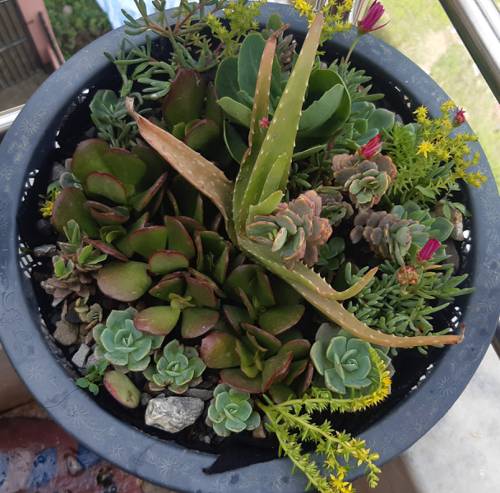
FAQ About Indoor Plants for Noise Reduction

How do indoor plants reduce noise?
Indoor plants help reduce noise by absorbing sound through their leaves, stems, and branches. The physical structure of the plant, along with the soil in the pot, can intercept, diffuse, and absorb sound waves, helping to reduce ambient noise levels in indoor spaces. Research suggests that larger leaves and denser foliage provide better sound absorption.

Which indoor plants are best for noise reduction?
Some of the best indoor plants for noise reduction include Ficus elastica (rubber plant), Ficus benjamina (weeping fig), Dracaena species, Chamaedorea seifrizii (bamboo palm), and Spathiphyllum (peace lily). These plants have dense foliage and large leaves that are particularly effective at absorbing sound waves.

How effective are indoor plants compared to other noise reduction methods?
Indoor plants provide a natural, aesthetic way to reduce noise, especially high-pitched sounds. However, they should be considered a complement to other noise reduction methods such as soundproofing materials and acoustic panels rather than a standalone solution. Plants offer additional benefits, such as improving air quality and enhancing the appearance of a space, which traditional noise reduction methods may not provide.

Do indoor plants block all types of noise equally?
No, indoor plants do not block all types of noise equally. They are particularly effective at reducing high-frequency sounds like echoes and background chatter. Lower frequency sounds, such as bass notes from music or traffic noise, are less effectively absorbed by plants.

How many indoor plants do I need to reduce noise effectively?
The number of plants required depends on the size of the room and the amount of noise you are trying to manage. In general, placing multiple large, leafy plants strategically around a room, especially in corners and along walls, can significantly help in absorbing sound. Experimenting with different placements can optimize noise reduction effects.

Can the positioning of plants affect their noise reduction capabilities?
Yes, the positioning of plants can influence their effectiveness in noise reduction. Placing them near windows, walls, and in corners where sound waves are likely to bounce can enhance their ability to absorb sound. Arranging plants in clusters can also create an effective noise barrier.

Are there any studies supporting the use of indoor plants for noise reduction?
Yes, there have been studies that demonstrate the noise-reducing abilities of indoor plants. Research has shown that plants can absorb sound frequencies between 250 Hz and 1000 Hz, making them effective at reducing high-frequency noises. However, more research is needed to quantitatively measure their effectiveness in various environments.

What roles do pot size and plant height play in sound absorption?
Pot size and plant height both play roles in sound absorption. Larger pots filled with soil can help absorb more sound, especially low-frequency sounds. Taller plants with dense foliage can cover more surface area, intercepting and diffusing more sound waves. Thus, using bigger pots and taller plants can enhance noise reduction significantly.

Can I use artificial plants for noise reduction?
No, artificial plants generally do not offer the same noise reduction capabilities as real plants. Natural indoor plants have structural components, such as live leaves and stems, that interact with sound waves to absorb noise, a quality that artificial plants lack.

Do plants have additional benefits aside from noise reduction in indoor spaces?
Yes, aside from noise reduction, indoor plants offer numerous benefits. They improve air quality by removing toxins, increase humidity, and can reduce stress and enhance mood by bringing a touch of nature indoors. Additionally, they contribute to the aesthetic appeal of a space and can increase concentration and productivity, which is especially beneficial in work environments.

How do environmental conditions affect a plant's ability to reduce noise?
Environmental conditions such as humidity, air circulation, and overall health of the plants can affect their noise reduction capabilities. Healthier plants with lush foliage are more effective at absorbing sound. Ensuring the right care, including proper watering, sunlight, and humidity levels, can optimize a plant's ability to reduce noise.

Can indoor plants replace acoustic panels for soundproofing?
While indoor plants can supplement soundproofing efforts by reducing high-frequency background noise, they cannot fully replace acoustic panels or other soundproofing materials, particularly for low-frequency sounds or in areas with high noise levels. For serious noise issues, combining plants with conventional acoustic treatments is recommended.

Are some types of leaves better at absorbing sound than others?
Yes, some types of leaves are more effective at sound absorption due to their size, shape, and texture. Broad, large leaves with rough surfaces are particularly adept at dispersing and absorbing sound waves. Plants with thick, fleshy leaves or those that grow densely tend to be better noise absorbers.

How can I arrange my indoor plants for optimal noise reduction?
Arranging indoor plants for optimal noise reduction involves strategic placement. Consider placing plants in locations where sound waves are likely to bounce, such as near walls, windows, and corners. Grouping plants can create more substantial noise barriers, and varying the heights and types of plants can help cover different sound frequencies more effectively.

Do soil types affect a plant's ability to reduce noise?
Yes, the type of soil can have an impact on a plant's noise-reducing capacity. Soils with higher organic content or looser structures can better absorb sound waves. Potting mixes designed for improved air retention and water management can contribute to the overall noise absorption capabilities of the plant.

Can indoor plants for noise reduction also help reduce heat or improve insulation?
While indoor plants primarily help with noise absorption, they can also contribute to temperature regulation by increasing humidity and providing a small degree of insulation. Dense foliage can create micro-environments that may be slightly cooler or warmer than their surroundings, but the effects are typically marginal compared to dedicated insulation methods.

How do the acoustics of a room affect the performance of indoor plants in noise reduction?
The acoustics of a room, including its size, shape, and material construction, can significantly affect how effectively indoor plants can reduce noise. Rooms with hard surfaces that cause sound to reverberate benefit more from the presence of plants. The addition of plants in such settings can help disrupt echo pathways and diffuse sound waves more effectively.

Are certain areas of a home or office more suitable for placing noise-reducing plants?
Yes, placing noise-reducing plants in areas prone to high sound traffic, such as living rooms, offices, entries, and near walls that face busy streets, can be particularly beneficial. Focus on areas where sound is most intrusive or where improving acoustics can enhance comfort and functionality.

Can hanging planters be effective in noise reduction?
Hanging planters can indeed be effective in noise reduction, particularly when hung in areas where sound frequently travels or echoes, such as under ceilings. Hanging plants with dense, trailing foliage can help intercept and diffuse sound waves from various directions, thus augmenting the acoustic ambiance of the room.

What maintenance do noise-reducing indoor plants require to remain effective?
Regular maintenance is essential to keep noise-reducing indoor plants effective. This includes providing adequate light, water, and nutrients, as well as regularly pruning to maintain dense foliage. Keeping the plants healthy ensures that they remain efficient at absorbing sound and continue to contribute positively to indoor environments.
